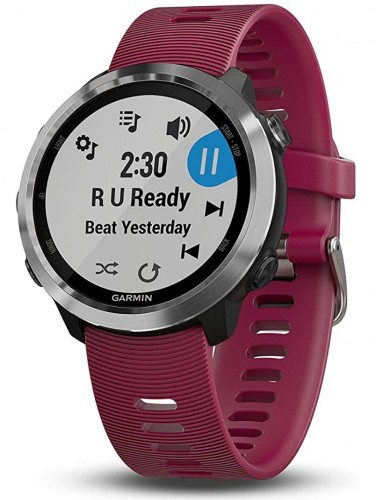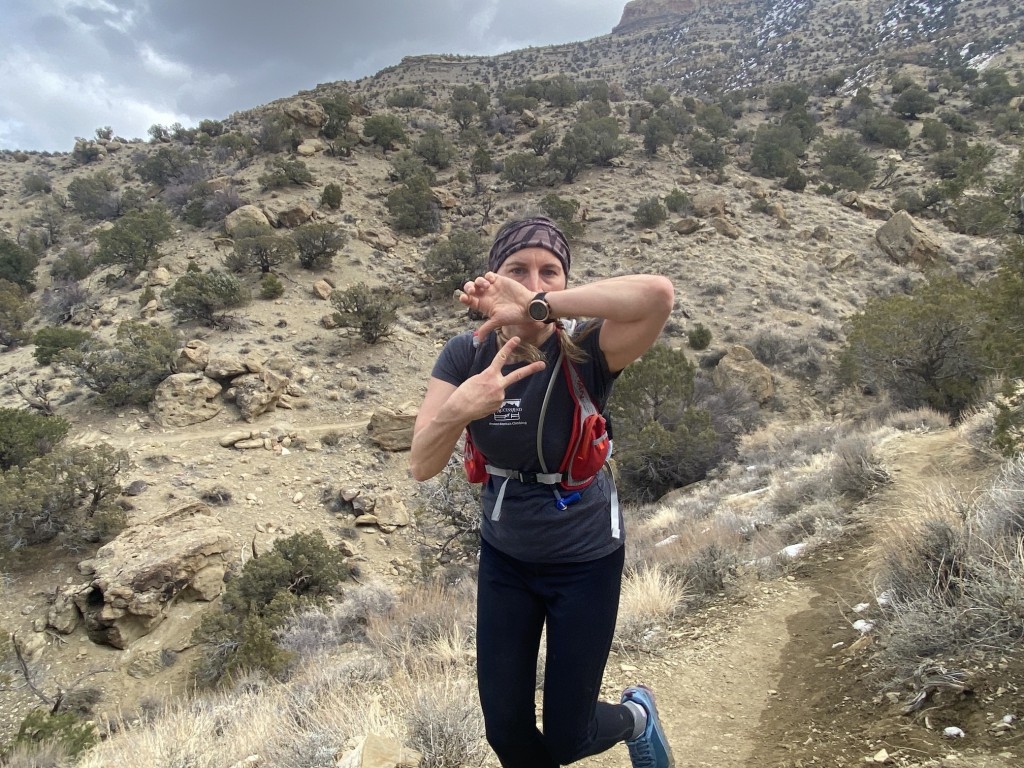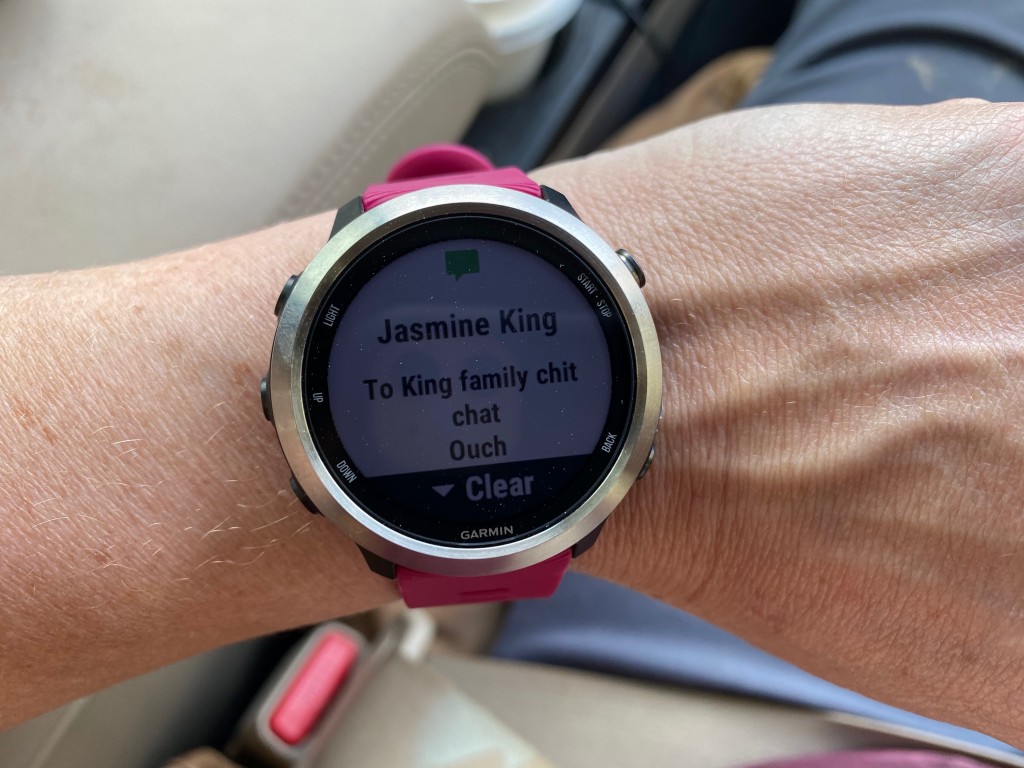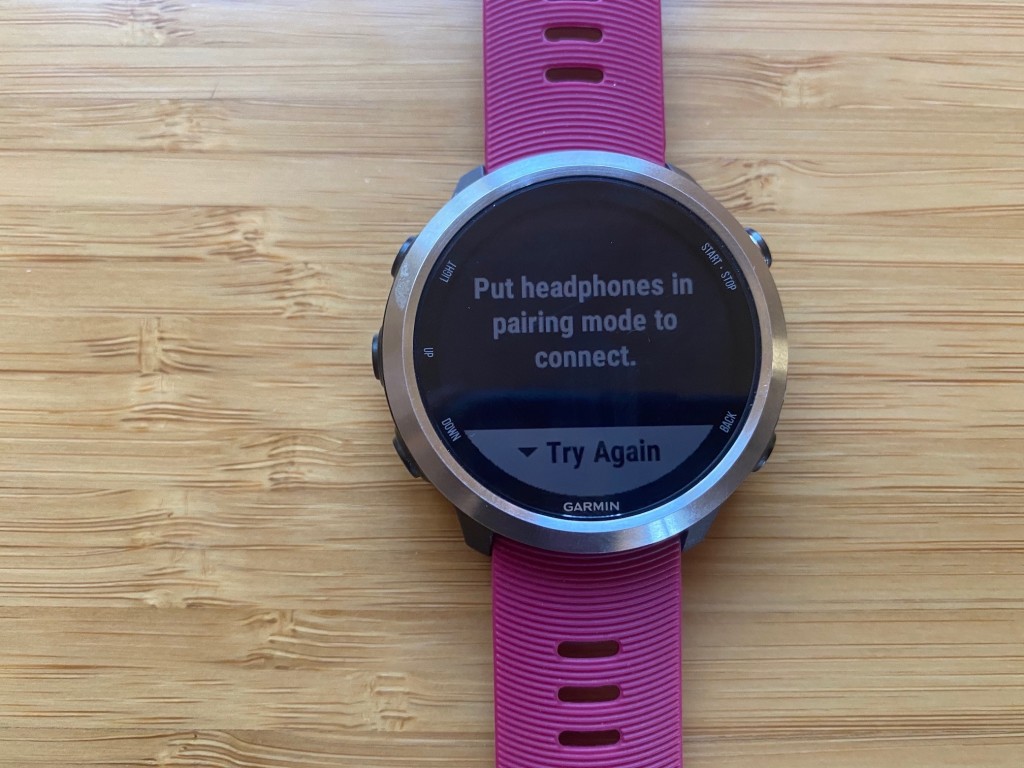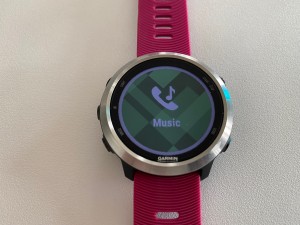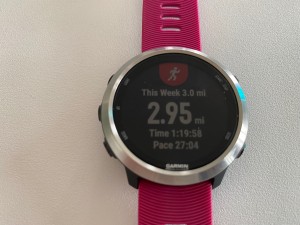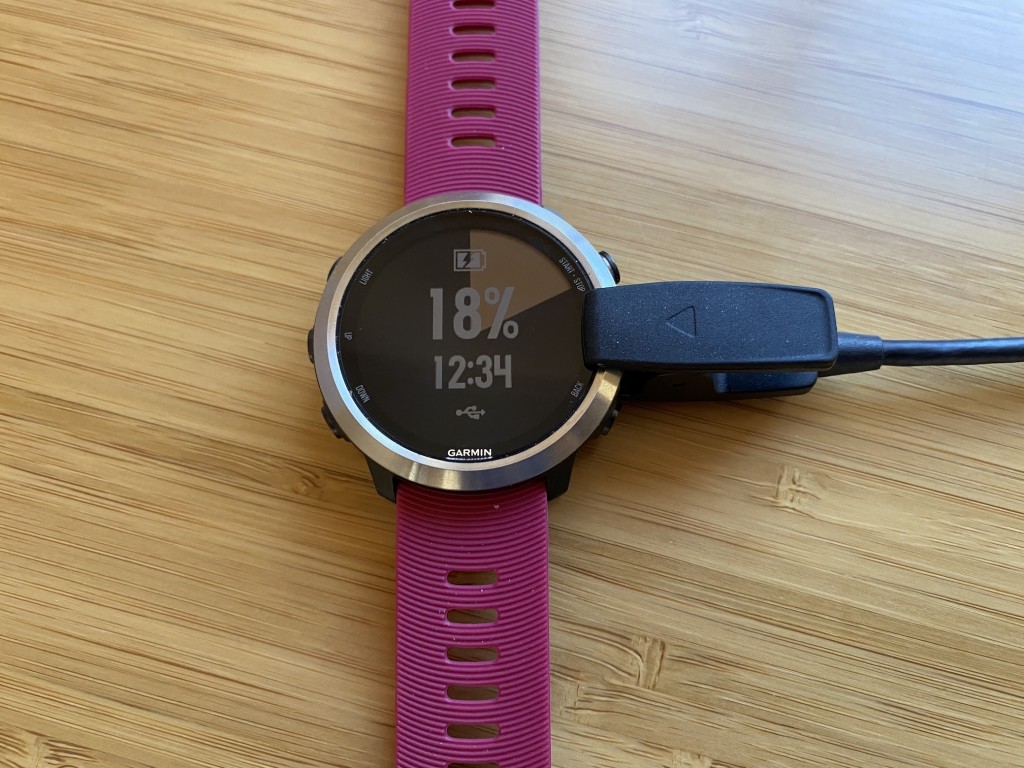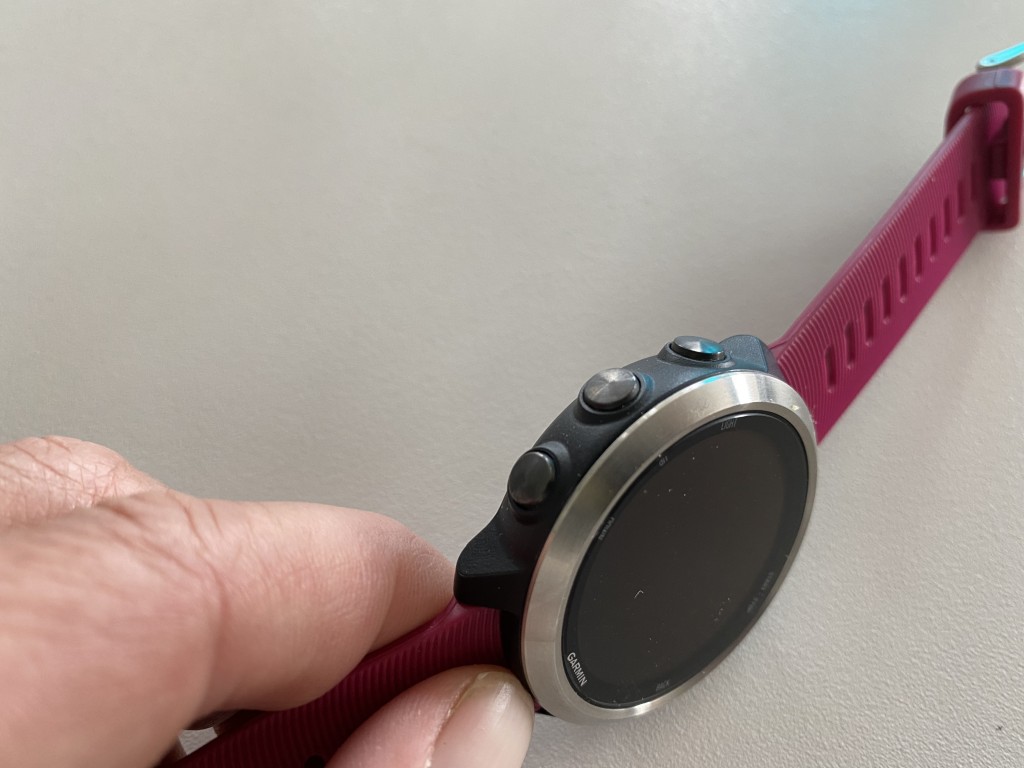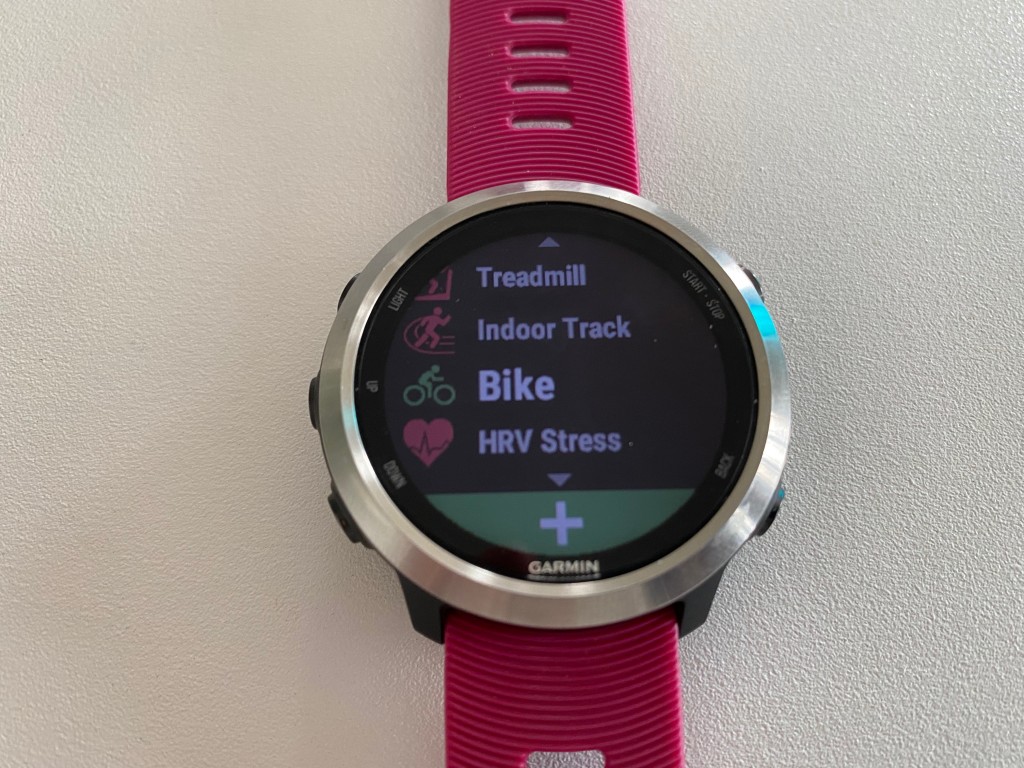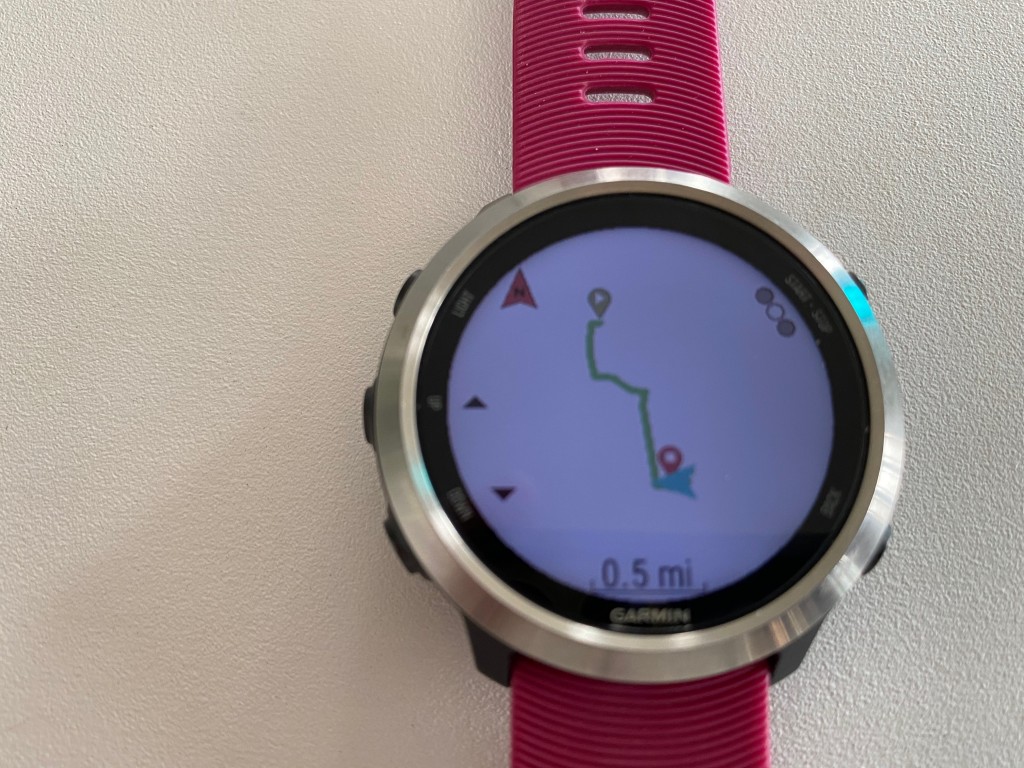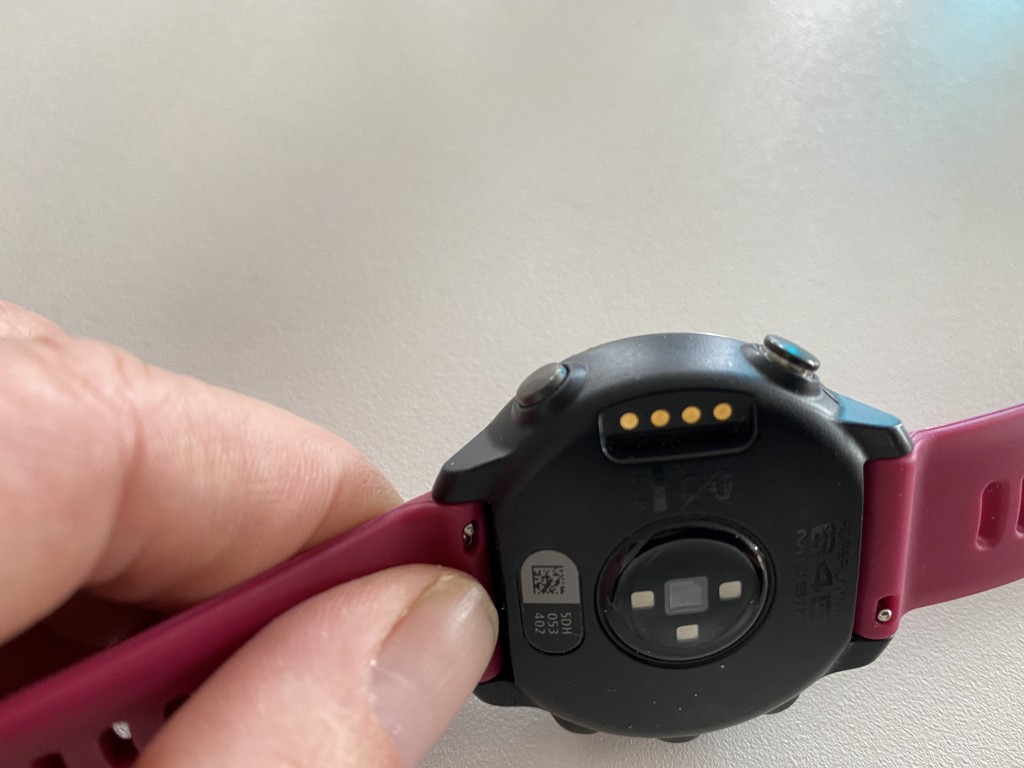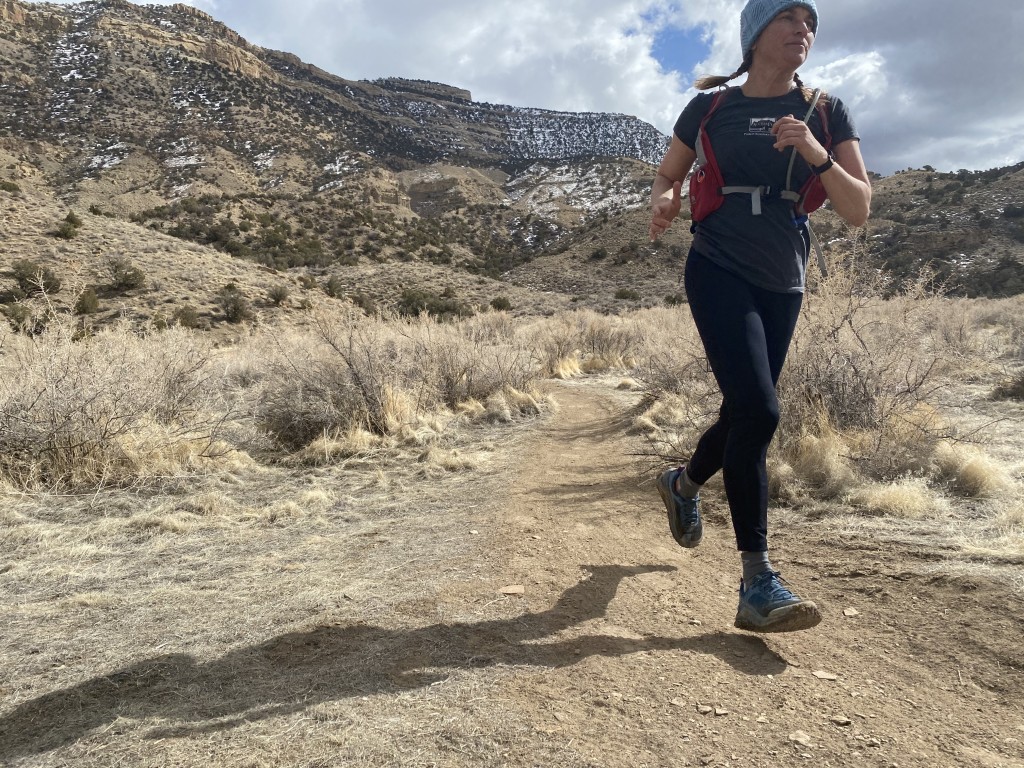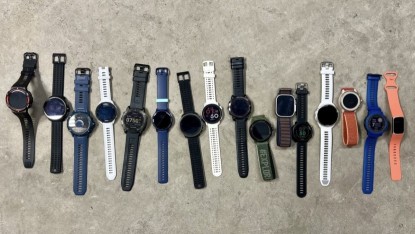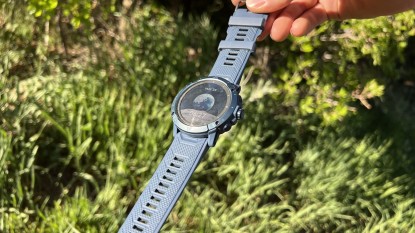Garmin Forerunner 645 Music Review
Our Verdict
Our Analysis and Test Results
The Garmin Forerunner 645 Music allows you to leave your smartphone at home while you play and work out. With the ability to track your activities, pay through your watch, and listen to music without using your phone, you can hit the cafe after your run. Stay up to date with smartphone notifications and enough battery life to get you through the week without a recharge. While this is a great watch for any athlete, it's not built for long GPS tracking, though it will do for a 50K or marathon run.
Performance Comparison
Features
This GPS watch has all the right features for any athlete, especially if you tend to run around town and love listening to music. It stands out for its small size and ability to store up to 500 songs. Pair with your wireless headphones, and you're set to jam out for miles. Given this is Garmin, you can tap right into Garmin connect and join a social ecosystem of fitness tracking, sharing, badges, kudos, and more. It also integrates easily with Strava and other fitness ecosystems.
The 645 Music comes loaded with excellent features for fitness tracking (heart rate, pedometer, relative stress measurement, sleep tracking), activity tracking, temperature, touchless payment, barometer, and compass. This is just scratching the surface. Widgets can be added to optimize your personal experience for what you need on your watch.
While it's not as heavily featured as some higher-end watches, it comes close. It doesn't have hardcore navigational features, but it does offer a breadcrumb trail and trackback options that'll help you get back to your starting point.
The Garmin Connect app is one of the most featured app choices that we've tested. It is extensive with blog posts, social media integrations, hundreds of widget choices, customizable watch faces, and pairing options with several music providers. Connect IQ is the Garmin store that provides a variety of app choices for navigation, music, and other features that you can use with your Garmin device. Access to these options makes features seem endless. However, what's already built into the watch is typically all that you need.
Notable Features:
- Garmin Pay
- Music storage (up to 500 songs)
- Music control (controls the program on your phone)
- Fitness tracking (pedometer, calories, rest quality)
- Continuous heart rate tracking
- Smartphone notifications
- Bluetooth connectivity
- Temperature
- Time, alarms
- 18 activity profiles built-in
- Access to workouts and activity planning
- Personal trainers via the Garmin Connect app
- Breadcrumb trail navigation
- Trackback to the starting point
- Water-resistant to 50m
- Course guidance
Battery Life
Battery life is good but not excellent. As a result, this watch is ideal for marathon distances and days that aren't too long. Garmin claims it will last up to 7 days in smartwatch mode, GPS mode without music for 14 hours, and GPS mode with music for 5 hours.
During our tests, this watch lasted about 6 days in smartwatch mode with a few activities thrown into the mix. During our GPS battery tests without music, the battery lasted for an average of 12 hours. The first time was while moving, and it died after 11 hours. The second was while sitting still, and it died after 13 hours. With music, GPS lasted for 5 hours, as claimed.
Overall, while the battery life is ideal for the athlete that likes to get out for a few hours, it's not ideal for ultra distances that require more than 12 hours of GPS time, especially if you plan on listening to music at the same time.
Ease of Use
We like the simplicity of this watch. Out of the box, it took about 5 minutes to set up with prompts, and we had the buttons down after just a couple of minutes. While we did have to look up a few features, the rest was pretty simple.
To get to an activity, simply scroll to the time screen and hit the button on the top right. Choose your activity, and get ready to go. Once the bar on the top of the screen goes green, you have your GPS acquired, and you're set to go. Different activity profiles will provide different types of data, but at the top, you will see your heart rate and connectivity. You can also change the settings to optimize each activity.
After the activity is done, visiting the Garmin Connect app will sync your device. This app will allow you to connect more than one device at a time and choose a preferred device. On the main screen, it will take the activities from all of those watches and add them all to your activity tracker. Here you can also engage in challenges, earn badges, share activities, and challenge friends in your group. This makes for a fun and integrated ecosystem. Or, you can simply share to Strava and do that all there.
Music downloads are a bit clunky but are getting better with upgrades over the years. Bluetooth headphone pairing also took a little longer than we would have liked. The other issue we came across is the pairing sometimes disconnects while exercising; however, this was fixed with a watch reboot.
The hardest thing is figuring out the breadth of feature options. They are overwhelming. There's plenty of widgets you can use to customize your watch. Garmin has a slew of other apps that integrate with Garmin devices, so taking the time to learn about those isn't short. Overall, while the watch itself is pretty simple to use, the app and the myriad of options take some time to get to know.
Accuracy
For the most part, GPS and heart rate accuracy are about average. On most of the runs and bike rides we did, our results were correct. To test this, we looked at the map to see how well our track fit the road. We also performed a GPS test while biking a known distance of 10.8 miles.
During this bike ride, the Forerunner 645 music was affixed to a backpack. It showed a final distance of 10.93 miles, which was 0.13 miles off. Calories burned showed 488, which is about right for a 1-hour bike ride for our lead tester. We tried measuring again on a trail run with a little cover of a known 5.0-mile distance. In the end, we got 5.2 miles, again showing a mileage that was a little bit off. While this isn't a big difference, you might see distances with 1+ miles added if tracking a longer activity. So be aware that, in our experience, this watch isn't always right on.
Additionally, while the track stayed on the map, we rode on the right side of the road, and the tracks showed to be on the left, which isn't 100% accurate. For most athletes, this is accurate enough and a distance that can still be used to gauge performance.
The heart rate monitor proved to have mediocre performance. During our tests, we saw a range of 3 bpm to 37 bpm off the actual measurements. Even though the watch is small and will fit most wrists, the monitor can't be trusted. That said, most aren't very accurate, and if you want a very accurate heart rate reading, be sure to buy a chest monitor. Garmin has a few.
Design
We love the smaller watch face, flat buttons, and well-thought-out design. The display is crisp and easy to see during bright and cloudy days alike. It comes with a nice, bright backlight that can easily be used at night. It's very light (1.5 oz) and takes up little room on the wrist (measured 42mm diameter, 12mm thickness). The screen goes right to the bezel and measures 29mm. The buttons are easy to push, and don't accidentally turn activities on or off. It's small enough not to get stuck to clothing and very comfortable to wear all day. Plus, the strap changes out without tools. Overall, a great design.
Value
You get what you pay for. While there are lower-priced options, this one is well featured with storage for music, Garmin Pay, and integration with the entire Garmin ecosystem. If you love listening to music on the go and don't want to carry a Smartphone, you might see the value in this higher-priced choice. However, there are lower-priced options with a better value if you're willing to give up a few features.
Conclusion
The Garmin Forerunner 645 Music is a low-profile watch stacked with excellent features. Store up to 500 songs and jam out to your favorite tunes on the trail. While it is expensive, it's one of the lowest-priced options that can actually store music.


